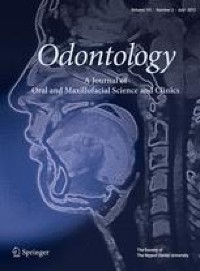
Dedifferentiated melanoma (DM) and undifferentiated melanoma (UM) is defined as a primary or metastatic melanoma showing transition between conventional and undifferentiated components (DM) or lacking histologic and immunophenotypic features of melanoma altogether (UM). The latter is impossible to verify as melanoma by conventional diagnostic tools alone. We herein describe our experience with 35 unpublished cases to expand on their morphologic, phenotypic, and genotypic spectrum, along with a review of 50 previously reported cases (total: 85) to establish the diagnostic criteria. By definition, the dedifferentiated/undifferen tiated component lacked expression of 5 routinely used melanoma markers (S100, SOX10, Melan-A, HMB45, Pan-melanoma). Initial diagnoses (known in 66 cases) were undifferentiated/unclassified pleomorphic sarcoma (n=30), unclassified epithelioid malignancy (n=7), pleomorphic rhabdomyosarcoma (n=5), other specific sarcoma types (n=6), poorly differentiated carcinoma (n=2), collision tumor (n=2), atypical fibroxanthoma (n=2), and reactive osteochondromatous lesion (n=1). In only 11 cases (16.6%) was a diagnosis of melanoma considered. Three main categories were identified: The largest group (n=56) comprised patients with a history of verified previous melanoma who presented with metastatic DM or UM. Axillary or inguinal lymph nodes, soft tissue, bone, and lung were mainly affected. A melanoma-compatible mutation was detected in 35 of 48 (73%) evaluable cases: BRAF (n=20; 40.8%), and NRAS (n=15; 30.6%). The second group (n=15) had clinicopathologic features similar to group 1, but a melan oma history was lacking. Axillary lymph nodes (n=6) was the major site in this group followed by the lung, soft tissue, and multiple site involvement. For this group, NRAS mutation was much more frequent (n=9; 60%) than BRAF (n=3; 20%) and NF1 (n=1; 6.6%). The third category (n=14) comprised primary DM (12) or UM (2). A melanoma-compatible mutation was detected in only 7 cases: BRAF (n=2), NF1 (n=2), NRAS (n=2), and KIT exon 11 (n=1). This extended follow-up study highlights the high phenotypic plasticity of DM/UM and indicates significant underrecognition of this aggressive disease among general surgical pathologists. The major clues to the diagnosis of DM and UM are: (1) presence of minimal differentiated clone in DM, (2) earlier history of melanoma, (3) undifferentiated histology that does not fit any defined entity, (4) locations at sites that are unusual for undifferentiated/unclassified pleomorphic sarcoma (axilla, inguinal, neck, digestive system, etc.), (5) unusual multifoca l disease typical of melanoma spread, (6) detection of a melanoma-compatible gene mutation, and (7) absence of another genuine primary (eg, anaplastic carcinoma) in other organs.













